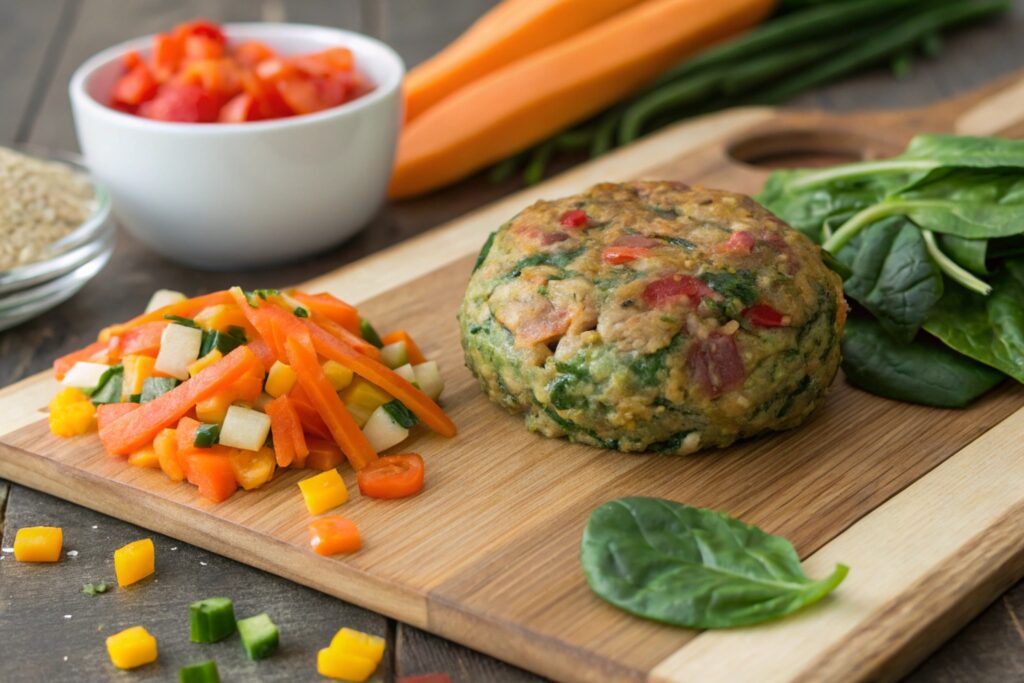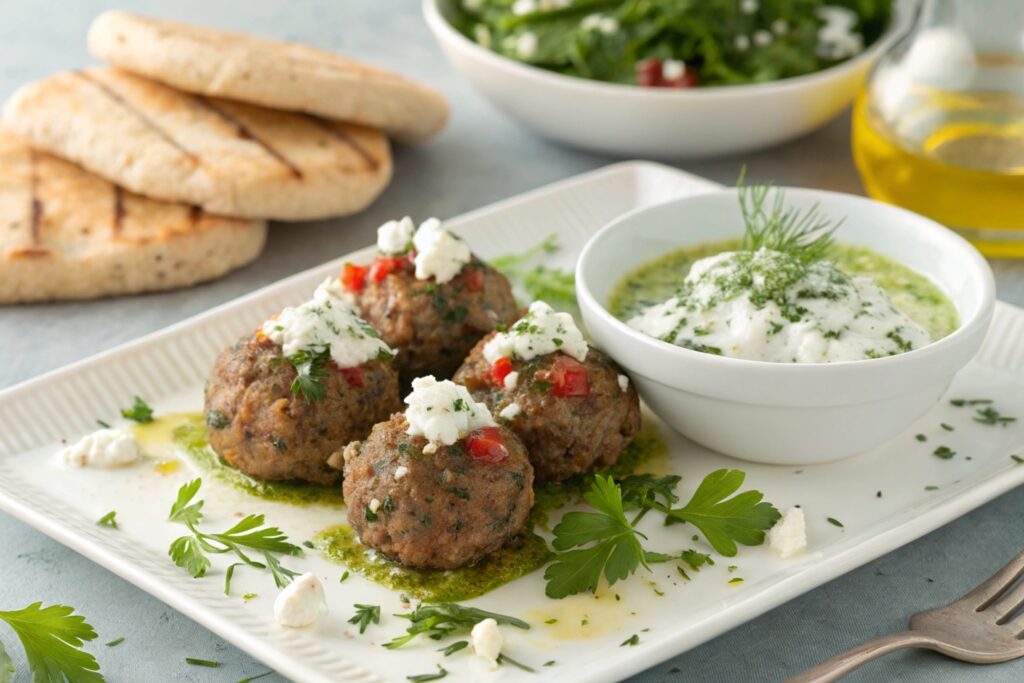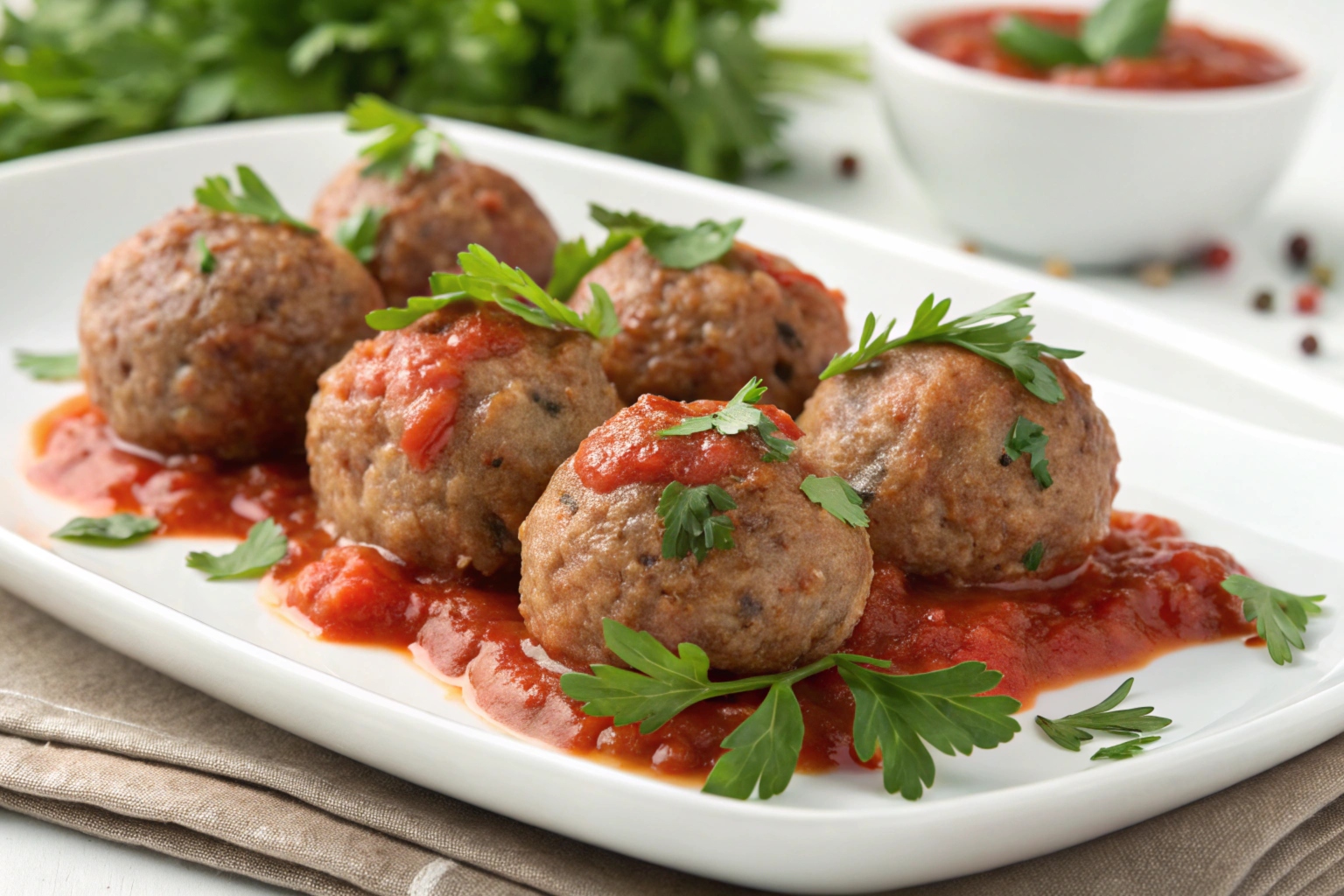Meatballs are a beloved dish around the world, cherished for their versatility, flavor, and simplicity. From hearty Italian-style meatballs served with pasta to tangy sweet-and-sour variations, they are a staple in many cuisines. But what if you could enjoy the deliciousness of meatballs while keeping them healthy and nutritious? In this guide, we’ll show you how to create the ultimate healthy meatball recipe that doesn’t compromise on flavor. By focusing on wholesome ingredients, smart cooking methods, and creative variations, you can craft meatballs that are both satisfying and good for you. Let’s dive into the art of making healthier meatballs step by step.
Key Ingredients for Healthy Meatballs
Creating the perfect healthy meatball starts with selecting the right ingredients. A balance of fresh flavors and nutrient-dense components ensures that your meatballs are not only delicious but also good for you.
Choosing Lean Meats
The foundation of any meatball recipe is the meat. Opting for lean ground beef, ground turkey, or ground chicken can significantly reduce the fat content while maintaining a rich flavor. Organic ground chicken or extra-lean ground beef are excellent choices for those looking to minimize saturated fat. If you prefer a mix of meats, consider combining lean ground beef with ground pork. This combination provides a delightful balance of moisture and flavor. Additionally, be mindful of the meat’s leanness—the higher the percentage of lean meat, the healthier the result.
Adding Vegetables for Nutrition

Vegetables are a fantastic way to boost the nutritional value of your healthy meatball recipe while adding moisture and texture. Finely chopped onions, grated zucchini, and shredded carrots blend seamlessly into the meatball mixture. Cauliflower rice is another great option for its mild flavor and fiber content. Don’t shy away from using leafy greens like spinach, which can be finely chopped or pureed for a nutrient-packed addition. Fresh garlic and green onion are excellent flavor enhancers that complement the natural taste of the meat.
Explore more ways to incorporate vegetables into your meals in this pickled cucumber salad recipe.
Selecting Healthy Binding Agents
Traditional breadcrumbs are commonly used in meatballs, but there are healthier alternatives. Almond flour, Panko breadcrumbs, or ground flaxseed are excellent choices to bind the ingredients together while keeping the recipe light. For those avoiding gluten, arrowroot starch or oat flour works wonderfully. These alternatives ensure your meatballs hold their shape without adding unnecessary calories or refined carbs.
Spicing It Up with Herbs and Spices
A well-seasoned meatball is the cornerstone of a flavorful dish. Fresh herbs like parsley, cilantro, and flat-leaf parsley not only enhance the flavor but also add a vibrant touch of color. For a deeper flavor profile, incorporate spices such as paprika, cumin, and oregano. Don’t forget the classics like garlic powder, onion powder, kosher salt, and black pepper. Balancing these spices creates a harmonious blend that elevates your meatballs from ordinary to extraordinary.
Cooking Methods for Healthier Meatballs
The way you cook your meatballs can significantly impact their healthiness. Choosing the right method ensures you retain flavor while reducing unnecessary fats and oils.
Baking Meatballs
Baking is one of the healthiest ways to cook a healthy meatball recipe as it requires minimal oil. Preheat your oven to 400°F and prepare a baking sheet by lining it with parchment paper or foil. Arrange the meatballs in a single layer, ensuring even spacing for uniform cooking. Bake for 15-20 minutes or until the internal temperature reaches 165°F, as measured by an instant-read thermometer. Baking not only creates evenly cooked meatballs but also allows excess fat to drip away, leaving you with a healthier result. For extra flavor, you can lightly brush the meatballs with olive oil or marinara sauce before baking.
For similar baked dishes, try this cottage cheese flatbread recipe.
Air-Frying for a Crispy Texture
Air-frying delivers a crispy exterior without the need for deep frying. Preheat your air fryer to 375°F and arrange the meatballs in a single layer in the basket. Cook for 10-12 minutes, shaking the basket halfway through to ensure even browning. Air-frying is perfect for those who enjoy a crunchy texture while keeping calorie intake low. This method is particularly convenient for quick meal prep or when you’re short on time.
Cooking on the Stovetop
For a rich and flavorful experience, cooking your healthy meatball recipe on the stovetop is an excellent choice. Heat a tablespoon of olive oil in a cast-iron skillet or a non-stick pan over medium-high heat. Place the meatballs in the skillet, searing them on each side for 4-5 minutes to develop a golden crust. Once seared, reduce the heat to medium and simmer the meatballs in a sauce of your choice, such as marinara or a tangy tomato cream sauce. This method infuses the meatballs with additional flavor from the sauce while ensuring they stay moist and tender.
Sneaking in Vegetables
Incorporating vegetables into meatballs is a simple way to enhance their nutritional profile and flavor without overwhelming the dish.
Best Vegetables to Use
Vegetables like grated carrots, finely chopped spinach, and shredded zucchini are perfect additions to meatballs. They add moisture and nutrients without altering the taste. Cauliflower rice, with its neutral flavor and high fiber content, is another excellent option. For a sweeter touch, roasted red peppers or caramelized onions can be finely chopped and added to the mixture.
If you love unique vegetable-based recipes, check out these instant pot stuffed peppers.
Preparation Techniques for Vegetables
To ensure the vegetables blend seamlessly into the meat mixture, use a food processor to finely chop or puree them. For ingredients like onions and garlic, sautéing them beforehand enhances their sweetness and reduces sharpness. This step is particularly useful for creating a balanced flavor profile. Grating or shredding vegetables is another effective way to incorporate them without affecting the texture of the meatballs. For added convenience, frozen vegetables like spinach can be thawed, drained, and mixed directly into the meatball ingredients.
Freezing and Reheating Meatballs
Healthy meatballs are ideal for meal prep, and proper freezing and reheating techniques ensure they stay fresh and flavorful.
Freezing Techniques for Meal Prep
To freeze meatballs, shape them into 1- or 1.5-inch balls and arrange them on a rimmed baking sheet lined with parchment paper. Freeze them in a single layer to prevent sticking. Once fully frozen, transfer the meatballs to a freezer-safe bag or container. Label the container with the date to track freshness. This method allows you to portion out servings as needed, making future meal prep a breeze.
Safe Reheating Methods
Reheat frozen meatballs directly from the freezer by baking them at 375°F for 20-25 minutes or until heated through. Alternatively, simmer them in a sauce over medium heat for 10-12 minutes, ensuring even heating. Use a meat thermometer to verify that the meatballs reach an internal temperature of 165°F. Proper reheating preserves their texture and flavor while ensuring food safety.
Unique Meatball Variations
Adding a global twist to your meatballs keeps your meals exciting and introduces new flavor profiles.
Greek-Inspired Meatballs

For a Mediterranean flair, use ground turkey or chicken mixed with feta cheese, fresh parsley, and dill. Add a touch of lemon zest for brightness. Serve these meatballs with a tangy tzatziki sauce and a side of warm pita bread or a fresh Greek salad.
Italian-Style Meatballs

Italian meatballs are a classic favorite. Combine ground beef with Parmesan cheese, garlic, and Italian seasoning. Simmer them in a rich marinara sauce and serve over spaghetti, zucchini noodles, or creamy polenta. A sprinkle of fresh basil or parsley on top completes the dish.
Sweet and Sour Meatballs

For an Asian-inspired twist, mix ground chicken with ginger, garlic, and breadcrumbs. Glaze the meatballs with a sauce made from reduced-sodium soy sauce, honey, rice vinegar, and a touch of ketchup. Serve over steamed white rice or cauliflower rice for a complete meal.
These meatballs pair perfectly with steamed rice or fried sushi.
Serving Suggestions and Sauces
Pairing meatballs with the right accompaniments elevates your meal from simple to spectacular.
Pairing with Dipping Sauces
Serve meatballs with a variety of dipping sauces to suit different palates. Pesto, marinara, and a chunky mushroom sauce are classic choices. For a creamy option, try sour cream blended with fresh herbs. A tomato cream sauce adds richness, while tzatziki provides a refreshing contrast.
For inspiration, explore this German potato soup recipe as a hearty side dish.
Serving Over Pasta or Rice
Meatballs pair beautifully with whole-grain options like brown rice or quinoa for added fiber. For a low-carb alternative, serve them over cauliflower rice or zucchini noodles. Adding a side of roasted vegetables or a fresh green salad rounds out the meal and ensures balanced nutrition.
Frequently Asked Questions
Can I substitute different meats?
Absolutely! Swap ground beef for ground turkey, chicken, or pork based on preference or dietary needs. A mix of meats, such as beef and pork, can enhance flavor and texture. For plant-based options, try substituting meat with lentils or chickpeas.
What is the best cooking time for meatballs?
Cooking times vary depending on the method. Baked meatballs typically require 15-20 minutes at 400°F, while stovetop meatballs need about 12-15 minutes on medium heat. Air-fried meatballs are ready in 10-12 minutes at 375°F.
How should I store leftover meatballs?
Store leftover meatballs in an airtight container in the refrigerator for up to 4 days. For longer storage, freeze them in individual portions to make reheating easier. Proper storage ensures the meatballs remain flavorful and safe to eat.
With these tips and techniques, you can create a healthy meatball recipe that’s versatile, delicious, and perfect for any occasion. Whether baked, air-fried, or simmered, these meatballs are sure to become a family favorite. Enjoy experimenting with variations and pairings to keep your meals exciting and nutritious!


2 thoughts on “healthy meatball recipe”